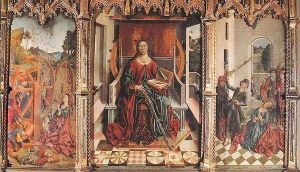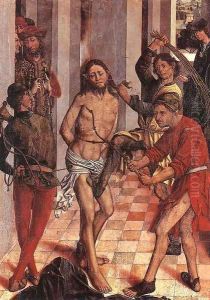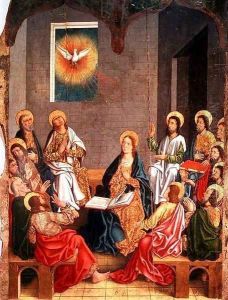Fernando Gallego Paintings
Fernando Gallego was a Spanish painter, whose career flourished in the late 15th century during the reign of the Catholic Monarchs. His exact birth and death dates are not precisely known, but he is generally believed to have been born around 1440 and to have died around 1507. Gallego's work is primarily associated with the Hispano-Flemish style, a blend of the detailed realism characteristic of Flemish art and the rich colors and expressive forms found in Spanish painting of the time.
Gallego was most active in the regions of Castile and Extremadura, where he worked on several major commissions, most notably altarpieces. His art is characterized by its intricate detail, use of vibrant colors, and deep religious fervor, reflecting the spiritual intensity of Spain during the late Middle Ages. One of his most significant works is the altarpiece for the Cathedral of Ciudad Rodrigo, which showcases his skill in composition and his ability to convey narrative through painting.
Despite his considerable output and influence in his time, Fernando Gallego's life remains somewhat obscure, with few documented details about his personal life or training. It is believed that he may have been influenced by, or even trained under, Flemish masters who were active in Spain, which would explain the notable Flemish elements in his style. Additionally, Gallego is thought to have had a workshop or school, through which his style and techniques were disseminated to other artists of the period.
Gallego's legacy lives on through his contributions to the Spanish Renaissance and the Hispano-Flemish style. His works continue to be studied for their artistic and historical significance, offering insights into the religious and cultural milieu of Spain at the cusp of the Renaissance. Despite the lack of extensive records on his life, Fernando Gallego is remembered as one of the leading figures of late 15th-century Spanish art, whose paintings reflect the complex interplay of Gothic tradition and Renaissance innovation.












